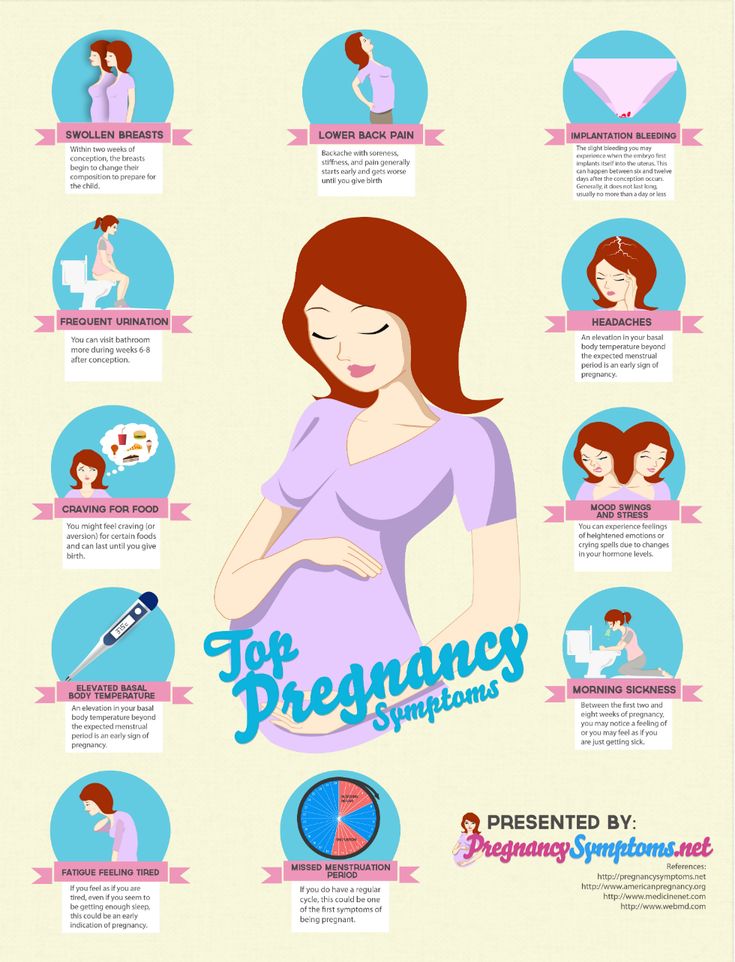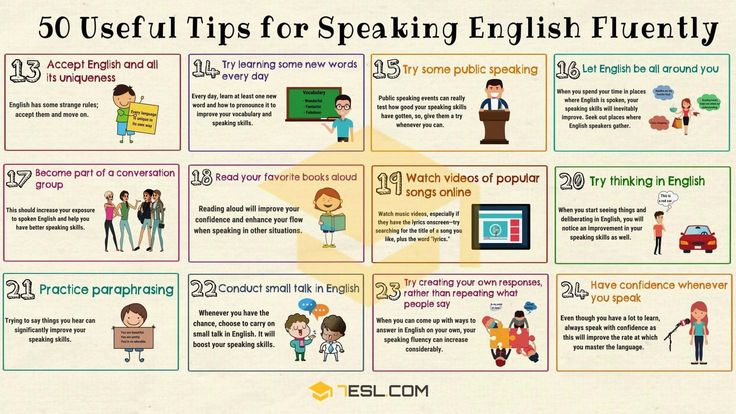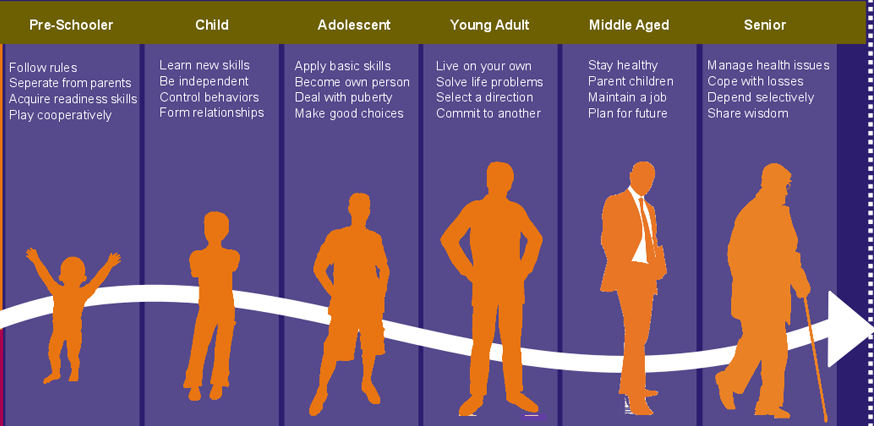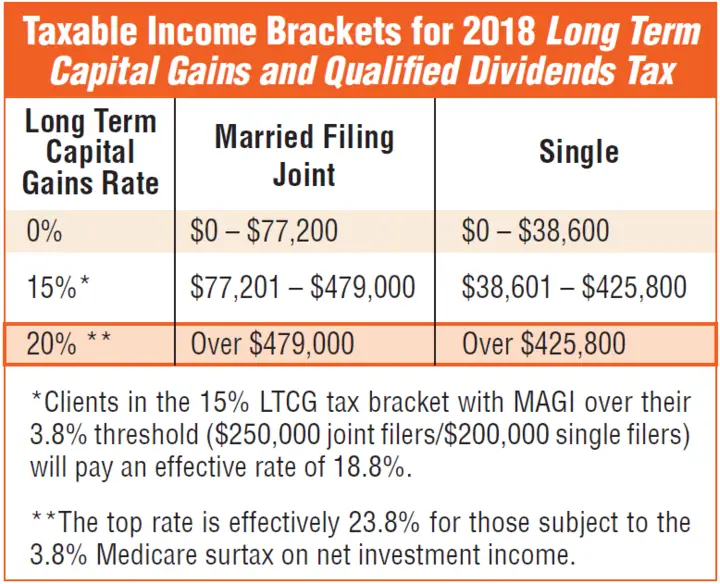Baby sleeping stages
Baby Sleep Cycles & Patterns Explained
Sleep is important for your baby, who needs plenty of shut-eye for healthy growth and optimum development. Understanding the different baby sleep cycles can help you ensure your little one is getting enough rest at every stage, from birth to toddlerhood.
Your baby’s sleep is closely related to your own health and well-being—when your little one’s sleeping, you can, too! Plus, learning about your baby’s unique sleep patterns can help you set schedules, anticipate when it’s time for a nap, and figure if he’s crying because he’s tired (or wet, or hungry). Now, you’re speaking your baby’s language!
How Long Should Your Baby Sleep at Every Stage?
The amount of time your baby spends sleeping will vary from day to day and will change as he gets older. The newborn and baby sleep chart below can help you get a better idea of how long your baby’s sleep cycles may last, the average amount of time he will sleep in a 24-hour period, and how many naps he will typically take.
Baby Sleep Chart
Remember, these are merely averages, and every baby is unique. Speak to your baby’s healthcare provider if you have any concerns or questions regarding sleep.
What Is a Sleep Cycle for Babies?
The term sleep cycle is often used broadly to describe patterns of wakefulness and sleep in a given time frame, such as 24 hours. Baby sleep cycle may also refer to a single sequence of two types of sleep: REM (Rapid Eye Movement) and non-REM sleep, also known as active and quiet sleep.
In REM, or active, sleep, your baby may move around more and make noises. In non-REM, quiet sleep, your baby sleeps more deeply.
Babies, and especially newborns, have general sleep cycles that are different from your own. They sleep for short periods of time, similar to the length of naps adults have. In part, that's because they have smaller stomachs, and wake up frequently because they're hungry and need to be fed.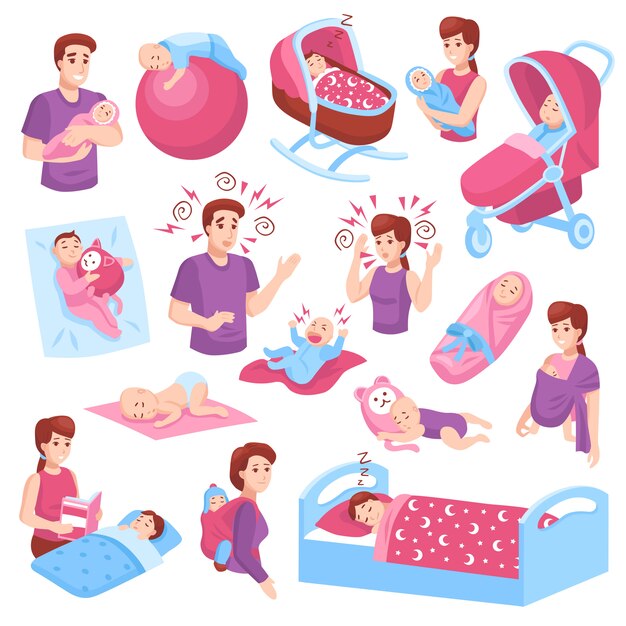
There are typically five stages that make up a baby’s sleep cycle:
Stage One:Your baby feels drowsy and starts to drift off to sleep.
Stage Two: REM sleep, or active sleep phase.
Stage Three: Light sleep where your baby’s sleep becomes less “active.
Stages Four and Five:Deep non-REM sleep, or quiet sleep. Your baby doesn’t move as much during this stage and it can be more difficult to wake him.
Pay attention to signs your baby is getting ready for sleep. This can help you soothe him to sleep when he needs it and get him to drift off more easily:
He may start rubbing his eyes
He may yawn
He may exhibit signs of fussiness, which include crying.
Newborn Sleep Cycle
After your baby is born, you may find yourself feeling quite exhausted. That's completely normal: you have a new addition to the family, and that can change many things in your life! On the one hand, a newborn does spend most of her time asleep.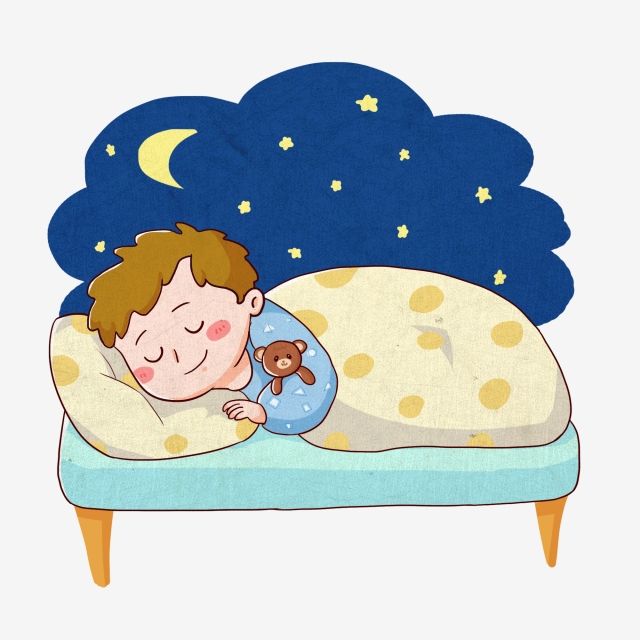 However, her sleep cycles are quite short: she may only sleep for 40 minutes to an hour or two during a sleep cycle. And when she wakes, you’re up too.
However, her sleep cycles are quite short: she may only sleep for 40 minutes to an hour or two during a sleep cycle. And when she wakes, you’re up too.
This can make it seem as though you’ll never get a good night’s sleep again. Constantly at your baby’s beck and call, you may not even know where to begin when it comes to setting a sleeping schedule, let alone a feeding routine. But these do make your life easier. Your baby benefits from the routine, better ensuring she’s getting the right amount of sleep on a daily basis, which means you’re one step closer to getting more sleep yourself!
In other words, don’t despair! Your baby’s sleep patterns are emerging, and with the right tools you can better set a more predictable schedule.
Don’t miss these must-watch sleep tips from a pediatric sleep consultant.
Setting Up a Newborn Sleep Schedule
Implementing a sleep schedule for your infant usually revolves around her circadian clock, so you may not know precisely when and how to make adjustments.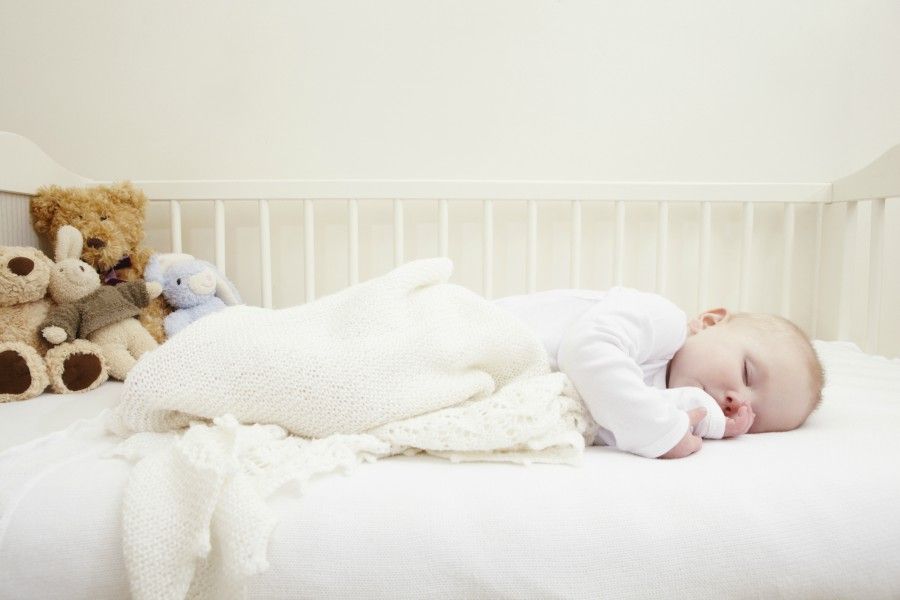 Tracking your baby’s sleep patterns can help you gain the insights you need to better set a schedule and know if your little one is getting the right amount of sleep every day. While it’s normal to be focused on overnight sleep, it is important to note that it’s what happens during the day that sets your baby up for a great night, and naps play a critical role in unlocking your baby’s optimal routine.
Tracking your baby’s sleep patterns can help you gain the insights you need to better set a schedule and know if your little one is getting the right amount of sleep every day. While it’s normal to be focused on overnight sleep, it is important to note that it’s what happens during the day that sets your baby up for a great night, and naps play a critical role in unlocking your baby’s optimal routine.
To help you establish the best routine for your baby (and you), check out the the Smart Sleep Coach by Pampers App. Powered by science, backed by experts and designed just for you. It equips you you with the tools and knowledge to get more Zzzz’s, turning you and your baby into a dream team. Take this FREE Sleep Assessment and get your personalized plan when you start your 7-day FREE trial!
Peering into this deeper level of your baby’s development will allow you to better identify if he is hungry, needs a diaper change, or if it’s time for a nap. Expert advice delivers personalized routine tips to keep your baby’s sleep on track, letting you know when to make adjustments and if he’s getting the right amount of sleep at every stage—possibly helping you sleep better, too!
What you can expect at the newborn stage of your baby’s sleep patterns:
For the first few weeks after birth, your little one sleeps most of the time, with one- to two-hour periods of wakefulness
At about six to eight weeks, your baby is settling into a routine and may show signs of drowsiness to signal when it’s time for a nap
Your baby's sleep pattern may change—he may now fall asleep around 6 or 8 PM, with his longest period of evening sleep being about three to five hours long
He may cry when he’s tired, signaling it’s time for sleep; if he does, try to soothe him right away so he can get to sleep more quickly
Once a routine is established, he may begin to soothe himself to sleep, as he gets older.
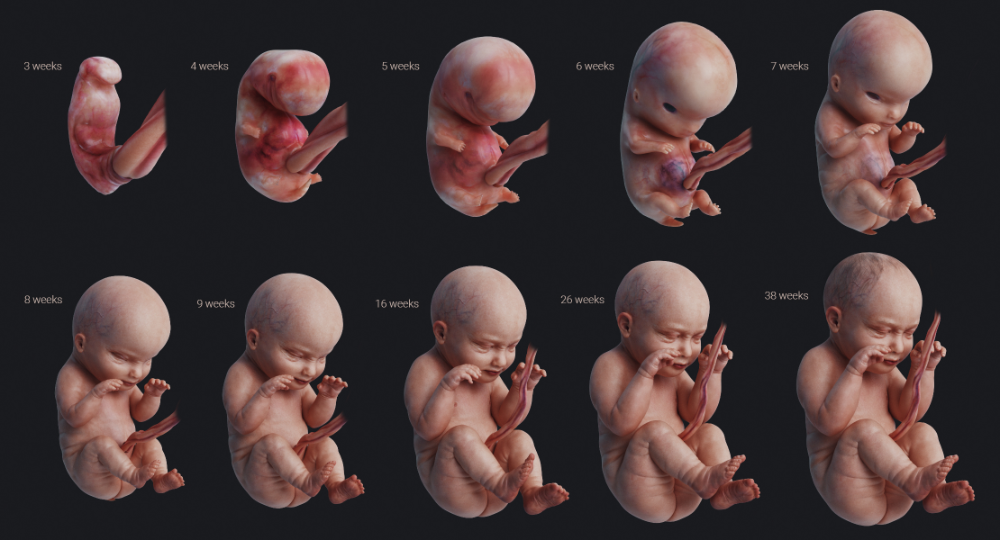
There are additional factors to consider when you’re trying to help your newborn get to sleep and stay asleep longer. Comfortable and safe sleep is always crucial. Don't overdress your baby and keep his crib bare. If you are swaddling your newborn, be sure you swaddle him just right—if he's wrapped too tightly or too loosely he may be waking up more frequently than needed.
Check your baby’s diaper before putting him down to bed; a wet diaper may not be comfortable and can keep him up at night. Pampers offers super absorbent diaper options specifically designed for nighttime. So, you may not have to worry about changing your baby’s wet diaper when he’s already deep asleep.
Your baby will also sleep better if he’s well fed. After all, no one likes to go to sleep hungry!
3- to 6-Month-Old Baby Sleep Patterns
As your baby grows, it may become easier to recognize when she’s tired and ready for rest. Naps become less frequent and your baby may begin to sleep for longer periods of time at night.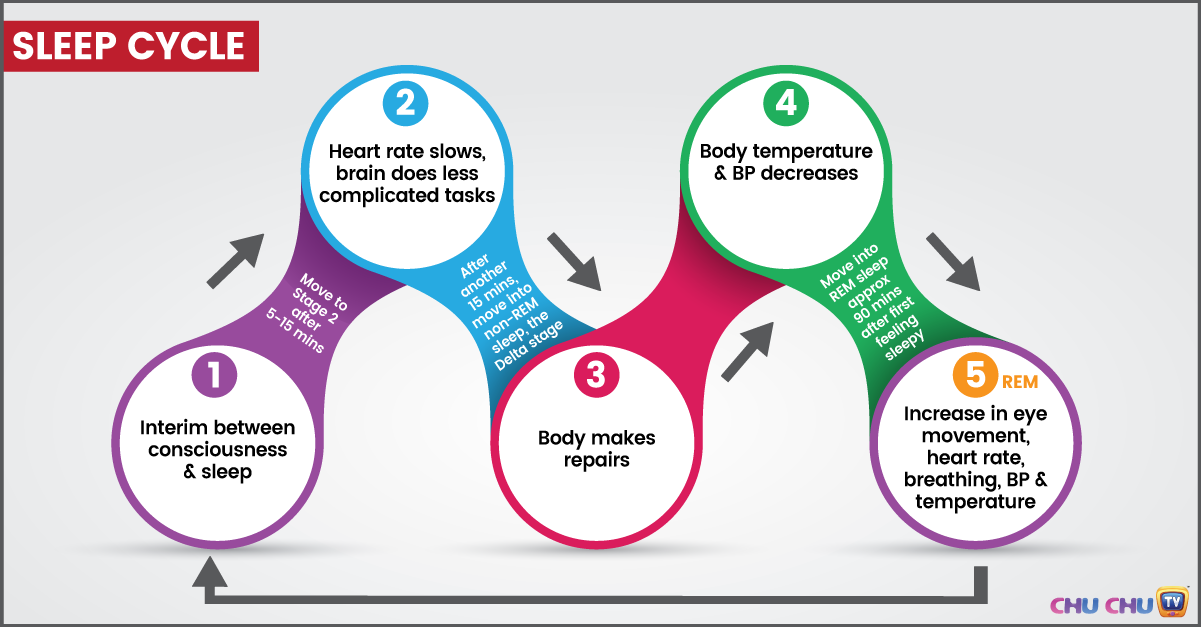
Continue to soothe your baby when she’s tired and maintain a safe and comfortable sleep environment. At around 4 months old, your baby may begin to learn how to self-soothe. You can help facilitate the process by gradually giving her less attention at night. Your baby will recognize that you won’t come running to her crib every time she cries, and in turn she may soothe herself to sleep by sucking on her thumb, rubbing a sheet, or rocking her head—it’s all part of growing up!
As a parent of a newborn you may feel that a good night’s sleep is a far-away dream, but with the right expectations and tools in place, that dream can become a reality sooner than you think. Understanding your baby’s unique sleep cycles and patterns can help you set a schedule that works for everyone—how’s that for a bedtime story with a happy ending!
Baby sleep: what to expect at 2-12 months
Baby sleep needs
Babies need sleep to grow and develop well. But babies’ sleep needs vary, just as the sleep needs of older children and adults do.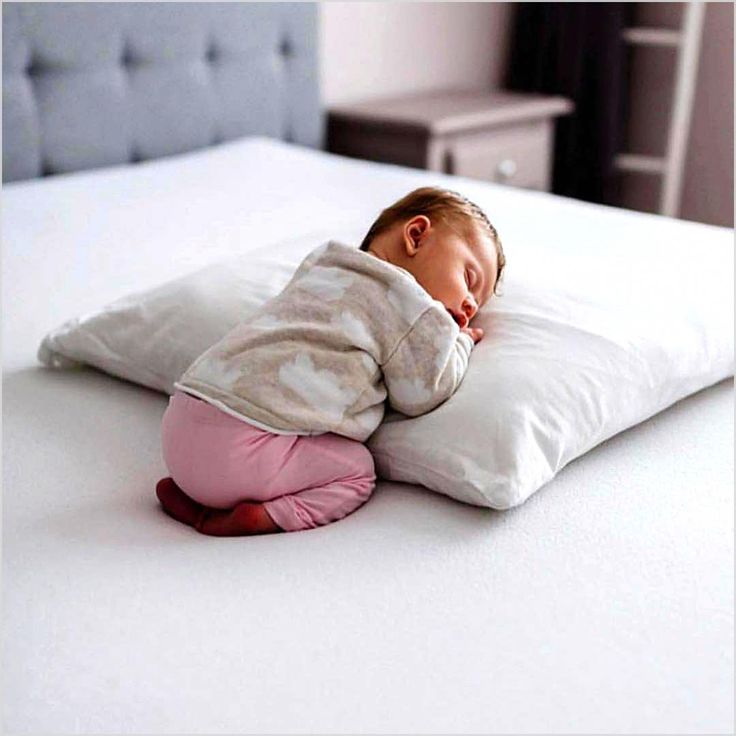 Your baby might be doing well with more or less sleep than other babies the same age.
Your baby might be doing well with more or less sleep than other babies the same age.
Your baby’s mood and wellbeing is often a good guide to whether your baby is getting enough sleep. If your baby is:
- wakeful and grizzly, they might need more sleep
- wakeful and contented, they’re probably getting enough sleep.
How baby sleep changes from 2 to 12 months
As they get older, babies:
- sleep less in the daytime
- are awake for longer between naps
- have longer night-time sleeps and wake less at night
- need less sleep overall.
2-3 months: what to expect from baby sleep
At this age, babies sleep on and off during the day and night. Most babies sleep for 14-17 hours in every 24 hours.
Young babies sleep in cycles that last 50-60 minutes. In young babies, each cycle is made up of active sleep and quiet sleep. Babies move around and grunt during active sleep, and sleep deeply during quiet sleep.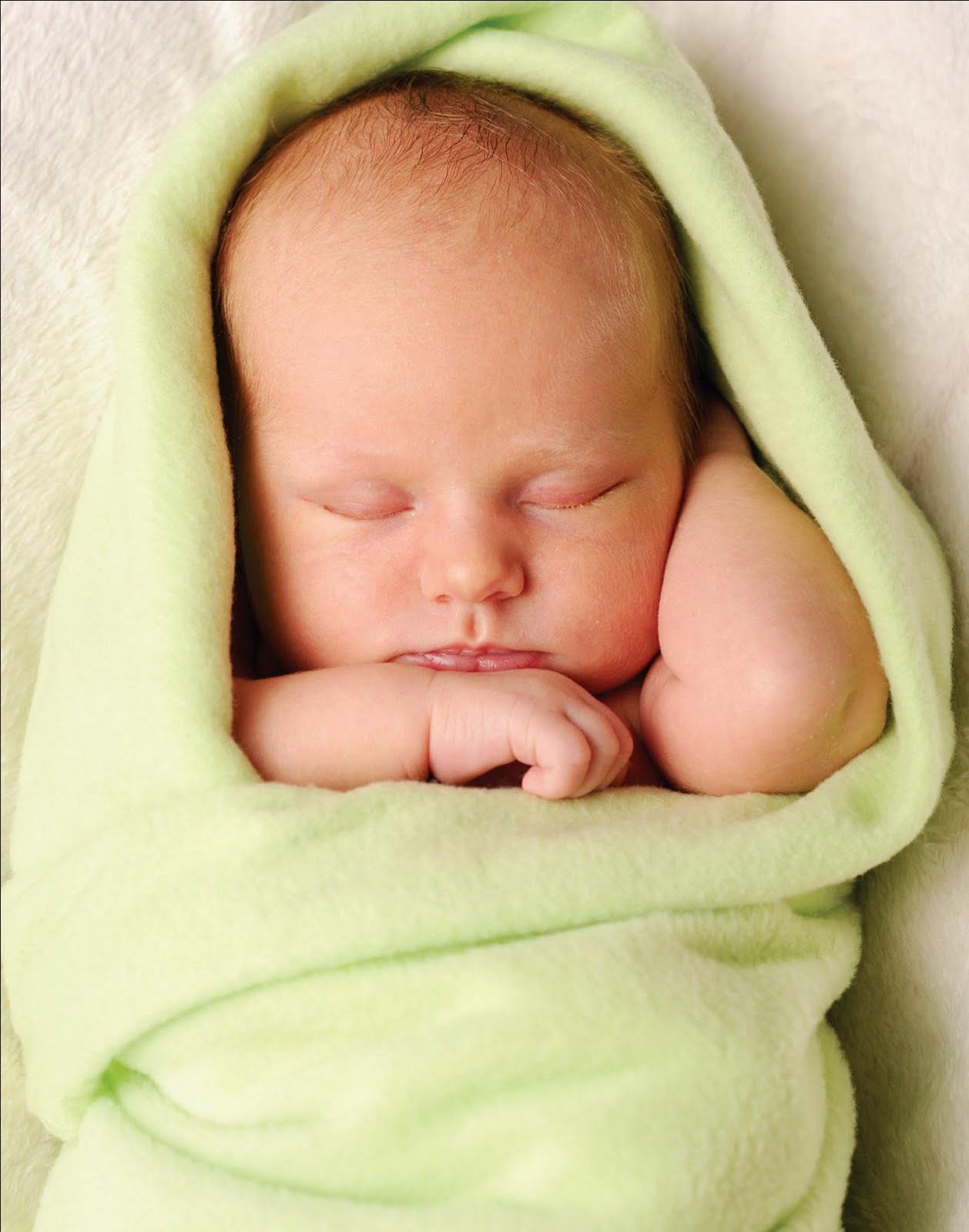
At the end of each cycle, babies wake up for a little while. They might grizzle or cry. They might need help to settle for the next sleep cycle.
At 2-3 months, babies start developing night and day sleep patterns. This means they tend to start sleeping more during the night.
Around 3 months: what to expect from baby sleep
Babies keep developing night and day sleep patterns.
Their sleep cycles consist of:
- light sleep, when baby wakes easily
- deep sleep, when baby is sound asleep and very still
- dream sleep, when baby is dreaming.
Sleep cycles also get longer, which might mean less waking and resettling during sleep. At this age, some babies might regularly be having longer sleeps at night – for example, 4-5 hours.
Most babies still sleep for 14-17 hours in every 24 hours.
3-6 months: what to expect from baby sleep
At this age, most babies sleep for 12-15 hours every 24 hours.
Babies might start moving towards a pattern of 2-3 daytime sleeps of up to two hours each.
And night-time sleeps get longer at this age. For example, some babies might be having long sleeps of six hours at night by the time they’re six months old.
But you can expect that your baby will still wake at least once each night.
6-12 months: what to expect from baby sleep
Babies sleep less as they get older. By the time your baby is one year old, baby will probably sleep for 11-14 hours every 24 hours.
Sleep during the night
From about six months, most babies have their longest sleeps at night.
Most babies are ready for bed between 6 pm and 10 pm. They usually take less than 40 minutes to get to sleep, but some babies take longer.
At this age, baby sleep cycles are closer to those of grown-up sleep – which means less waking at night. So your baby might not wake you during the night, or waking might happen less often.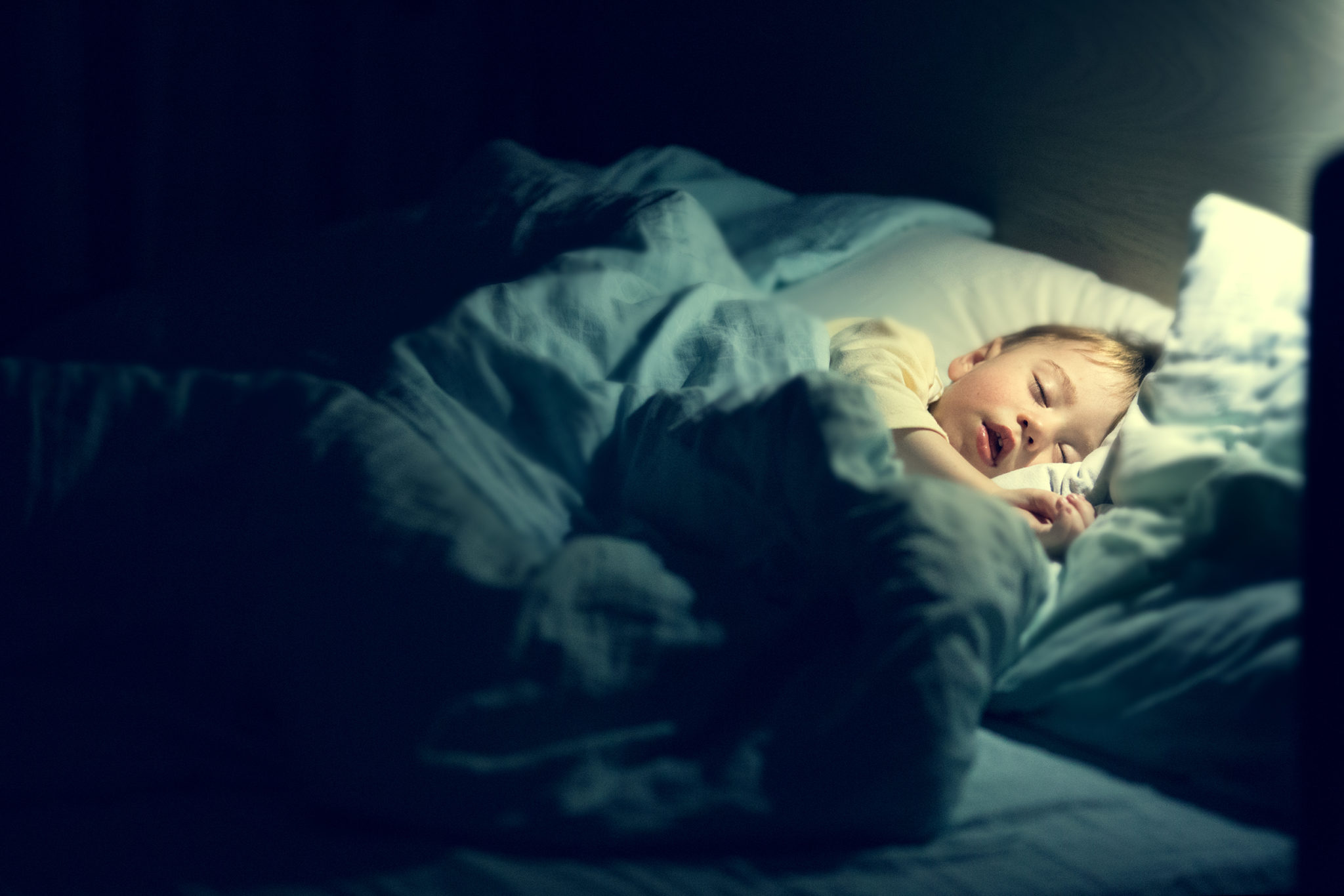
But many babies do wake during the night and need an adult to settle them back to sleep. Some babies do this 3-4 times a night.
Sleep during the day
At this age, most babies are still having 2-3 daytime naps that last for between 30 minutes and 2 hours.
6-12 months: other developments that affect sleep
From around six months, babies develop many new abilities that can affect their sleep or make them more difficult to settle:
- Babies learn to keep themselves awake, especially if something interesting is happening, or they’re in a place with a lot of light and noise.
- Settling difficulties can happen at the same time as crawling. You might notice your baby’s sleep habits changing when baby starts moving around more.
- Babies learn that things exist, even when they’re out of sight. Now that your baby knows you exist when you leave the bedroom, baby might call or cry out for you.
- Separation anxiety is when babies get upset because you’re not around.
 It might mean your baby doesn’t want to go to sleep and wakes up more often in the night. As babies mature they gradually overcome this worry.
It might mean your baby doesn’t want to go to sleep and wakes up more often in the night. As babies mature they gradually overcome this worry.
6-12 months: night-time feeding
From around six months of age, if your baby is developing well, it’s OK to think about night weaning and phasing out night feeds. But if you’re comfortable with feeding your baby during the night, there’s no hurry to phase out night feeds.
You can choose what works best for you and your baby.
A rollover feed is a late feed somewhere between 10 pm and midnight. Some parents find that rollover feeds help babies sleep longer towards morning. If this works for you and your baby, it’s fine to give baby a rollover feed.
Concerns about baby sleep
If you’re concerned about your baby’s sleep, it can be a good idea to track your baby’s sleep for a week or so. This can help you get a clear picture of what’s going on.
You can do this by drawing up a simple chart with columns for each day of the week.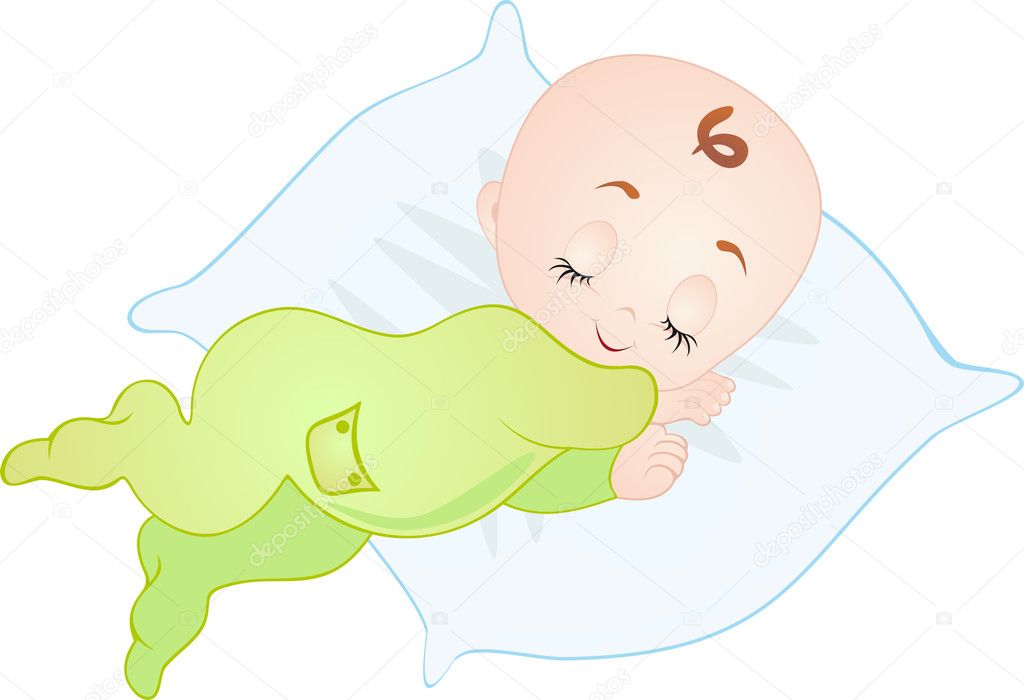 Divide the days into hourly blocks, and colour the intervals when your baby is asleep. Keep your chart for 5-7 days.
Divide the days into hourly blocks, and colour the intervals when your baby is asleep. Keep your chart for 5-7 days.
Once completed, the chart will tell you things like:
- when and how much sleep your baby is getting
- how many times your baby is waking during the night
- how long your baby is taking to settle after waking.
You can also record how you tried to resettle your baby and what worked or didn’t work.
Then you can compare the information in your chart with the general information about baby sleep needs above:
- How does your child compare to other babies the same age? If your baby is wakeful and grizzly and getting much less sleep than others, your baby might need more opportunities for sleep.
- How many times is your baby over six months old waking up during the night? If it’s 3-4 times a night or more, you might be feeling very tired. You might want to think about phasing out some of your baby’s sleep habits.

If you decide you need to see a professional for help with your baby’s sleep, take your chart with you.
If you’re concerned about your baby’s sleep, it’s a very good idea to see a child health professional for help. You could start by talking with your GP or child and family health nurse.
How baby sleep patterns affect grown-ups
Babies and grown-ups need sleep for wellbeing, but babies sleep differently from adults. Most parents of babies under six months of age get up in the night to feed and settle their babies. For many, this keeps going after six months.
Some parents are OK with getting up a lot at night as long as they have enough support and they can catch up on sleep at other times. For others, getting up in the night over the long term has a serious effect on them and their family lives.
The quality of your sleep can affect your health and your mood. Being exhausted can make it hard to give your baby positive attention during the day. And your relationship with your baby and the time and attention you give baby during the day can affect the quality and quantity of baby’s sleep.
And your relationship with your baby and the time and attention you give baby during the day can affect the quality and quantity of baby’s sleep.
So it’s important that you get some help if you’re not getting enough sleep. You could start by asking family or friends for help. And if you feel that lack of sleep is affecting you mentally or emotionally, it’s a very good idea to talk with your GP or another health professional.
There’s a strong link between baby sleep difficulties and symptoms of postnatal depression in women and postnatal depression in men. But the link isn’t there if parents of babies with sleep difficulties are getting enough sleep themselves.
Languages other than English
- Arabic (PDF: 471kb)
- Dari (PDF: 469kb)
- Karen (PDF: 298kb)
- Persian (PDF: 420kb)
- Simplified Chinese (PDF: 502kb)
- Vietnamese (PDF: 324kb)
Children's sleep • Confy
Sleep is of great importance for babies, both in terms of their physical and psychological development. So much so that the need for sleep is one of the most important needs after eating. Parents often worry about how their newborn baby's sleep schedule should be organized. In order to obtain information about the sleep pattern of newborn babies, one should first consider the two main phases of sleep that have been identified as a result of studying the activity of the human brain. The first of the two phases of sleep is REM (rapid eye movement) sleep. The REM phase, which is an abbreviation for the phrase "rapid eye movements", is the period of dreams. Before diving into the REM phase, there is a phase of NREM sleep of non-REM sleep (sleep without rapid eye movement). During NREM sleep, we do not dream. Studies have shown that around the 7th month of pregnancy, the baby begins REM sleep, and from the 8th month he develops non-REM sleep (NREM sleep).
So much so that the need for sleep is one of the most important needs after eating. Parents often worry about how their newborn baby's sleep schedule should be organized. In order to obtain information about the sleep pattern of newborn babies, one should first consider the two main phases of sleep that have been identified as a result of studying the activity of the human brain. The first of the two phases of sleep is REM (rapid eye movement) sleep. The REM phase, which is an abbreviation for the phrase "rapid eye movements", is the period of dreams. Before diving into the REM phase, there is a phase of NREM sleep of non-REM sleep (sleep without rapid eye movement). During NREM sleep, we do not dream. Studies have shown that around the 7th month of pregnancy, the baby begins REM sleep, and from the 8th month he develops non-REM sleep (NREM sleep).
Slow-wave sleep NREM sleep consists of four successive phases.
Phase 1: covers approximately the first 5 minutes of sleep. In the first phase, there is a transition from light wakefulness to sleep. When the eyelids are lowered, the eyes begin to move rapidly, and brain activity gradually slows down.
In the first phase, there is a transition from light wakefulness to sleep. When the eyelids are lowered, the eyes begin to move rapidly, and brain activity gradually slows down.
2nd phase: light sleep phase lasting from 15 to 45 minutes.
3rd phase: the transition period to deep sleep, during which metabolism, heart rate and breathing slow down, muscles relax, and the body cools down through sweating.
4th phase: the deepest phase of sleep. Waking up a person who is in the 3rd and 4th phases of sleep is quite difficult.
After completion of the 1st and 2nd phases of NREM sleep, REM sleep begins.
Newborn babies sleep differently. At first, a newborn baby wakes up every 2-3 hours, stays awake for a short period of time after his feeding needs are met, and then falls asleep again. A newborn baby needs to sleep for about 18 hours. In the first months, babies sleep in REM sleep, after a certain period of time they begin the phase of NREM sleep. Before 3 months, babies enter REM sleep as soon as they fall asleep. After 2 months of age, nighttime sleep begins to become longer, and from the 3rd month, the amount of daytime sleep begins to decrease, and nighttime sleep is expected to become longer, deeper, and uninterrupted.
Before 3 months, babies enter REM sleep as soon as they fall asleep. After 2 months of age, nighttime sleep begins to become longer, and from the 3rd month, the amount of daytime sleep begins to decrease, and nighttime sleep is expected to become longer, deeper, and uninterrupted.
Babies take longer to fall into deep sleep, while adults can go from light sleep to deep sleep much faster. When parents put their babies to bed immediately after feeding, rocking or lulling them in some other way, such babies often wake up and start crying. It takes about 20 minutes for babies to fall into a deep sleep. Especially in the first few months, it will be beneficial for you to stay close to the baby until he/she falls into a deep sleep, and when he wakes up and finds you next to him, he/she will feel safe and fall asleep again. In the following months, as you teach your child to sleep alone, you will teach him to make the transition from light sleep to deep sleep on his own.
Infant sleep time and recommendations:
0-6 weeks: Newborns typically sleep between 16 and 18 hours. Some babies often wake up, while others sleep up to 4-5 hours. It is useful to teach the baby to distinguish between day and night from the first weeks of his life. The easiest way to do this is not to isolate the baby from everyday noises, not to make special efforts to ensure silence in the house and not to artificially darken the environment during daytime sleep, but during the nighttime sleep of your child, on the contrary, you should provide a quiet and unlit environment. .
Some babies often wake up, while others sleep up to 4-5 hours. It is useful to teach the baby to distinguish between day and night from the first weeks of his life. The easiest way to do this is not to isolate the baby from everyday noises, not to make special efforts to ensure silence in the house and not to artificially darken the environment during daytime sleep, but during the nighttime sleep of your child, on the contrary, you should provide a quiet and unlit environment. .
6-8 weeks: During this period, babies sleep between 2 and 3 pm. The baby begins to distinguish between day and night, and with the lengthening of the feeding intervals, the duration of night sleep begins to increase. The second month is important for the baby in terms of getting used to the family daily routine. During this period, you can wake your baby and feed him before going to bed at night, and wake him up in the morning at a convenient time for you. Your baby's periods of restlessness and crying (except when he suffers from colic) will become more regular, usually at the end of the day, and his anxiety ends with a big "go to the toilet".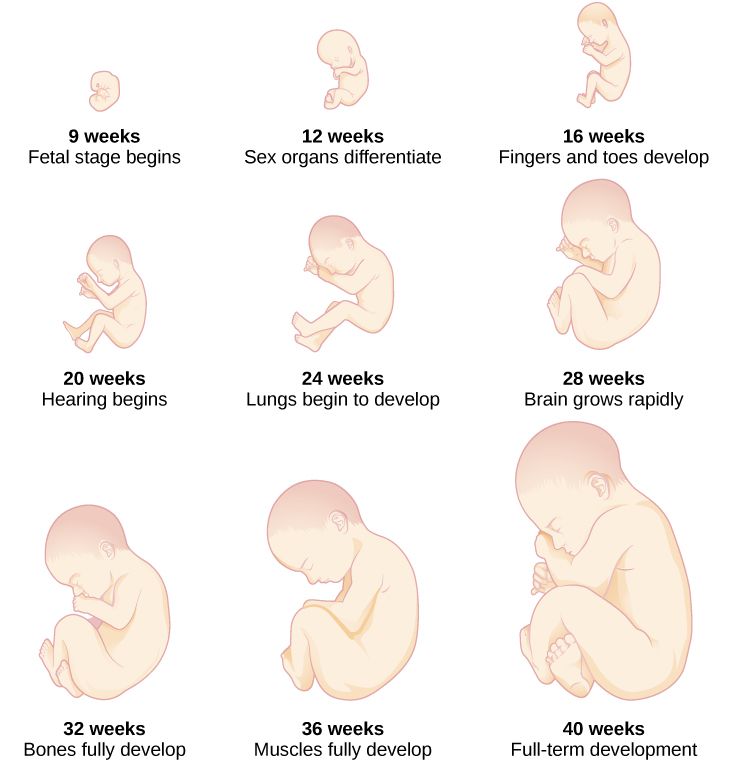 After that, your baby is ready to breastfeed and sleep.
After that, your baby is ready to breastfeed and sleep.
After 16 weeks: During this period, the baby will sleep continuously for 7-8 hours a day. The meaning of "uninterrupted sleep" in a baby is that he, without waking up, goes through the stages of transition from deep sleep to light / superficial sleep. The child, in total, should sleep about 14 hours a day. A drowsy baby, cries, makes different sounds, tosses and turns in bed, but one should not forget that during such actions, he, in fact, is still sleeping, so he should learn to fall into a deep sleep, calming / relaxing himself during the transitional phases sleep.
After 20 weeks: From this age on, in addition to uninterrupted nighttime sleep, babies should sleep at least twice during the daytime, once before and once after noon. Even if he does not sleep, it will be useful for him to spend these hours in the crib alone. In total, at this age, the baby should sleep for about 13-14 hours.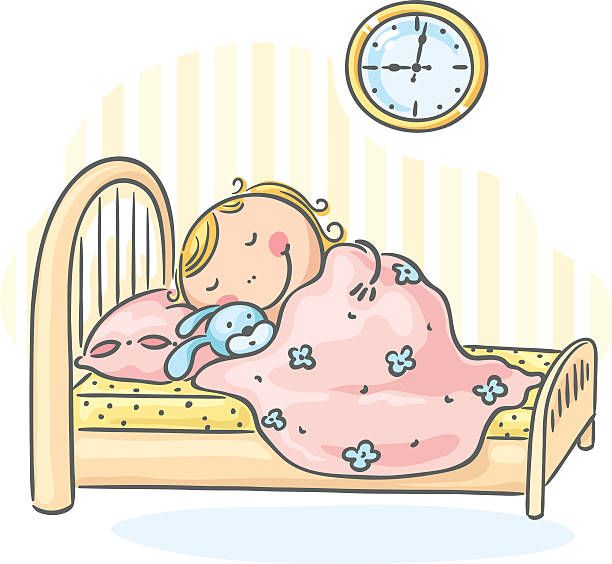
24-48 weeks: A baby who sleeps 3-4 hours during the day should sleep continuously for about 11 hours at night. But most parents are not so lucky. Because during these months it becomes clear that babies persist in wanting to continue their daytime activities in the crib at night, such as turning, climbing and crawling in the crib, with the result that they cannot sleep.
Between 24-48 weeks, the baby may actively begin to react to frequently encountered unfamiliar and even familiar faces, for example, a nanny or an uncle and aunt. Your little one will start to feel uncomfortable in unfamiliar places and will hug their mom especially tighter. This emotional response is called separation anxiety.
During this period, which is critical for your baby's emotional and spiritual development, he begins to realize that he is different from the people around him and to experience the fear of separation from his parents. During this period, sleep problems are quite common and at the same time, they are considered normal.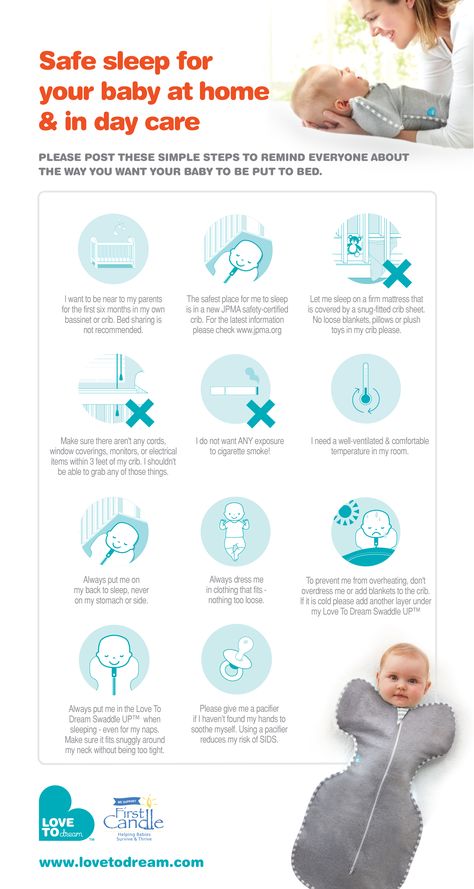 Especially during this period, when babies wake up alone in the dark, they may think that they have lost their parents and start crying sadly. Parents should pay attention to this critical period and take special care of their baby, at a time when he needs it.
Especially during this period, when babies wake up alone in the dark, they may think that they have lost their parents and start crying sadly. Parents should pay attention to this critical period and take special care of their baby, at a time when he needs it.
Babies who are learning to sleep
Getting a baby to sleep regularly depends a lot on the parents. Undoubtedly, every baby needs a father and mother, but, unfortunately, parents often make mistakes in this regard. Hearing the voice of the child, they rush to him with all his might and try to occupy him with something (take him in his arms, talk, caress, etc.), thus complicating the process of self-immersion of the baby into a deep sleep. Because of this wrong approach, the baby, who falls asleep every 2-3 hours, without going into a deep sleep phase, wakes up and after a while gets used to this routine. Once this habit is formed, it will be quite difficult to change it.
It is very important that babies get used to lying alone from the first months of life and that this habit is not broken under any pretext.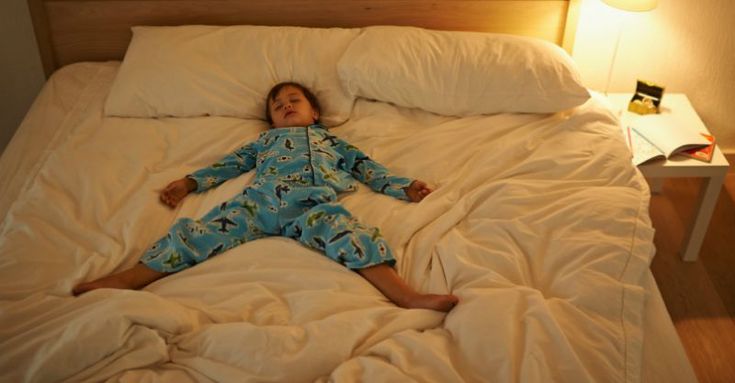 However, this does not mean that you should refuse to share and enjoy spending time / sleeping with your baby. It is important that the child eventually understands that he has his own bed, and sleeping next to you is just a pleasure, not part of the routine. Parents usually crave to put their children to sleep next to them in order to “not let them freeze in winter”, so that “they do not open up”, in other cases, so that “the baby is not afraid to sleep alone at night”, unfortunately, this kind of desire of parents does not go away , and continue at a later age of the baby. The desire of parents to sleep with babies is understandable to some extent, but the constancy of this action harms the psychological development of babies. Its main disadvantage is that children become dependent on their parents and begin to perceive sleep alone as a manifestation of a lack of love from adults.
However, this does not mean that you should refuse to share and enjoy spending time / sleeping with your baby. It is important that the child eventually understands that he has his own bed, and sleeping next to you is just a pleasure, not part of the routine. Parents usually crave to put their children to sleep next to them in order to “not let them freeze in winter”, so that “they do not open up”, in other cases, so that “the baby is not afraid to sleep alone at night”, unfortunately, this kind of desire of parents does not go away , and continue at a later age of the baby. The desire of parents to sleep with babies is understandable to some extent, but the constancy of this action harms the psychological development of babies. Its main disadvantage is that children become dependent on their parents and begin to perceive sleep alone as a manifestation of a lack of love from adults.
In order for the baby to sleep in his own crib, he must first be taught to go to bed at a certain time.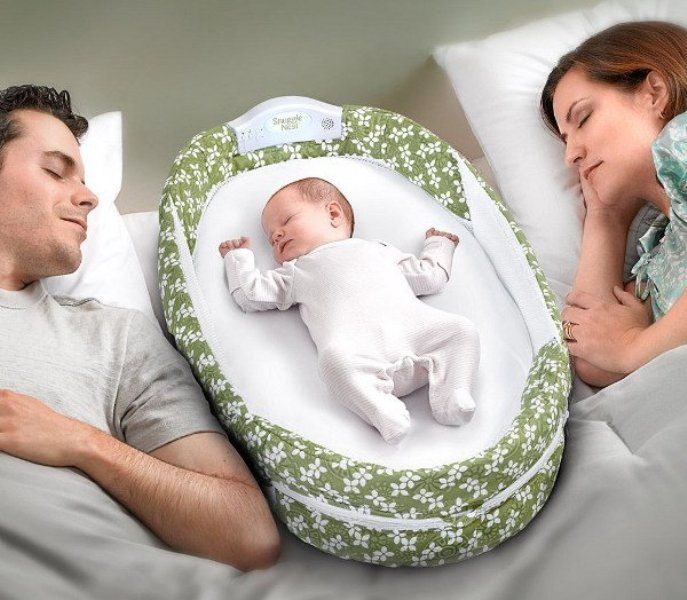 In order to help your baby sleep well at night, you need to establish a regular sleep schedule. If you stick to the same sleep routine every night, your baby will get used to it and will soon realize that nights are not a time for play, but for sleep. You can get your baby into a sleep routine with warm, soothing baths at the same time. After that, a fairy tale, the last feeding and bed. The main thing is to teach the child to relax on their own. That is why active and stimulating activities should be avoided. Telling a story or singing a lullaby before bed, reading a story or listening to a recording of a lullaby until the baby falls asleep, after which leaving the room will help him develop the habit of sleeping alone.
In order to help your baby sleep well at night, you need to establish a regular sleep schedule. If you stick to the same sleep routine every night, your baby will get used to it and will soon realize that nights are not a time for play, but for sleep. You can get your baby into a sleep routine with warm, soothing baths at the same time. After that, a fairy tale, the last feeding and bed. The main thing is to teach the child to relax on their own. That is why active and stimulating activities should be avoided. Telling a story or singing a lullaby before bed, reading a story or listening to a recording of a lullaby until the baby falls asleep, after which leaving the room will help him develop the habit of sleeping alone.
Alternatively, you can also try to put your baby to sleep with a special blanket, fine cotton blanket or soft toy that meets all the necessary safety standards, but before doing so, make sure that the toy does not cover his face and does not create a suffocation hazard.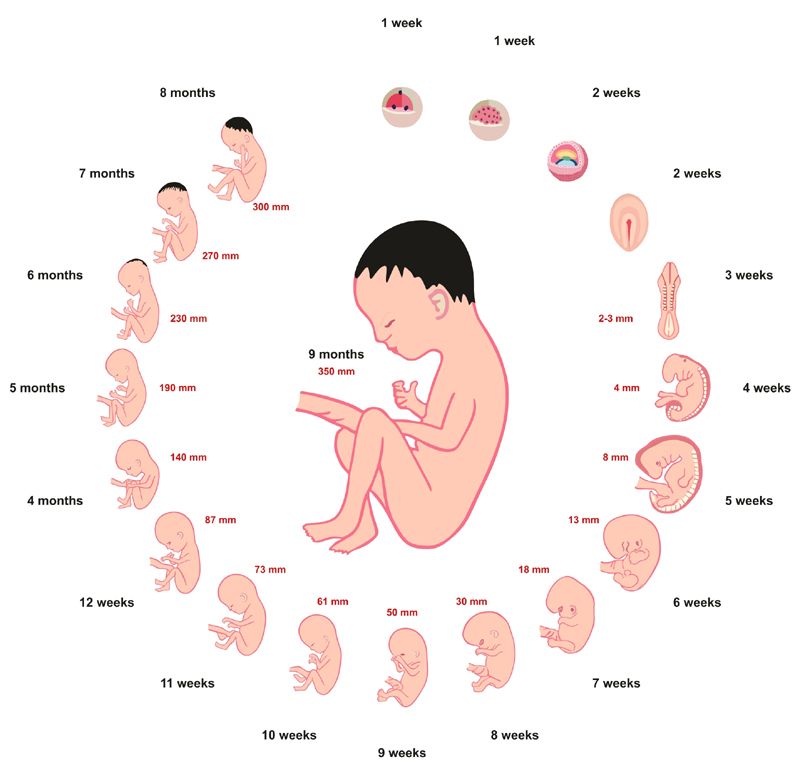 When a toddler knows that his favorite teddy bear is waiting for him in bed every night, he will make a connection between this toy and sleep. After a while, if the baby suddenly wakes up at night, he will learn to fall asleep peacefully with a teddy bear. You can also hug the bear more often so that it absorbs your scent. This way, your child will feel that a part of you is with him throughout the night.
When a toddler knows that his favorite teddy bear is waiting for him in bed every night, he will make a connection between this toy and sleep. After a while, if the baby suddenly wakes up at night, he will learn to fall asleep peacefully with a teddy bear. You can also hug the bear more often so that it absorbs your scent. This way, your child will feel that a part of you is with him throughout the night.
There is another method to teach a child to sleep on his own, according to which, regularly, during the week, he should be given the opportunity to cry, after which routine care should be carried out, put him to bed and allowed to fall asleep on his own. In this method, no matter how much the child cries, the duration of crying will increase: on the first day - 10 minutes, on the second - 15 minutes, on the third - 20 minutes, etc., the main thing is not to try to calm him down, since the main goal is teach him to sleep on his own. Most often, after a week, babies begin to fall asleep on their own and without tantrums. The only unclear point of this method is the reason for developing the habit of independent sleep, whether it is getting used to falling asleep without crying, or resignation to the fact that mom and dad will not come running to his crying. It should also be borne in mind that the application of such a method to an infant, who, especially in the first period of his life, urgently needs to experience a sense of "security", at a later age may cause some other problems.
The only unclear point of this method is the reason for developing the habit of independent sleep, whether it is getting used to falling asleep without crying, or resignation to the fact that mom and dad will not come running to his crying. It should also be borne in mind that the application of such a method to an infant, who, especially in the first period of his life, urgently needs to experience a sense of "security", at a later age may cause some other problems.
The first months of your baby's life are extremely important in terms of teaching him many of the behaviors he will exhibit in the future. Therefore, the best results in this important period can be achieved, taking into account the information obtained as a result of scientific research, and of course the maternal instinct.
Sleep phases | REM and deep phases of sleep in newborns
09/15/2015
154984
187
Child's regimen
The author of the article
Tatyana Chkhikvishvili
Tatyana Chkhikvishvili
Head of online programs, psychologist, sleep and breastfeeding consultant
Mother of two children
Newborn sleep and sleep phases in children during the first months of life differ from adult sleep. What are the phases of a baby's sleep, when there is a transition to an adult sleep model, what happens after a change in the sleep pattern - this article tells.
What are the phases of a baby's sleep, when there is a transition to an adult sleep model, what happens after a change in the sleep pattern - this article tells.
0–4 months. Improve sleep in 3 weeks
Sleep before birth
Unborn children spend most of their time sleeping. It is even possible that they are dreaming. Unfortunately, scientists do not have accurate information about exactly how babies sleep in their mother's stomach.
The first days of life
Immediately after birth, babies continue to sleep a lot, spending almost all the time in sleep. In newborns, sleep is divided into two phases:
- active sleep;
- restful sleep.
Active sleep already in the first days after birth is transformed into REM sleep, similar to the phase of REM sleep in adults. REM sleep is also called the REM stage - from the English "Rapid Eye Movement", which means "sleep with rapid eye movements.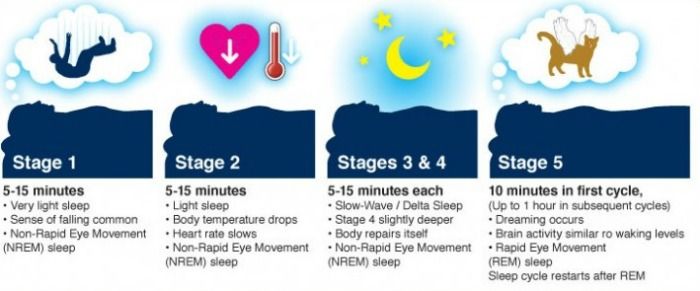 "
"
REM sleep
In adults, REM sleep accounts for 15–25% of sleep, while in infants, REM sleep is about 40–50%. This is necessary for the growth and development of the child's brain - it is in the phase of REM sleep that dreams give the brain visual images, training the brain and stimulating its growth.
REM sleep provides the function of psychological protection, relieves psycho-emotional stress, filters information, reboots the brain, and ensures brain growth.
The proportion of REM sleep decreases as the child grows:
Gradual maturation - 1-3 months
Another form of baby sleep is restful sleep, which later transforms into non-REM sleep, similar to adult sleep. Brain maturation takes place in different ways, all children have their own, individual speed. Non-REM sleep requires higher brain maturity, which is why it occurs later than REM sleep. This happens on average in 1-3 months.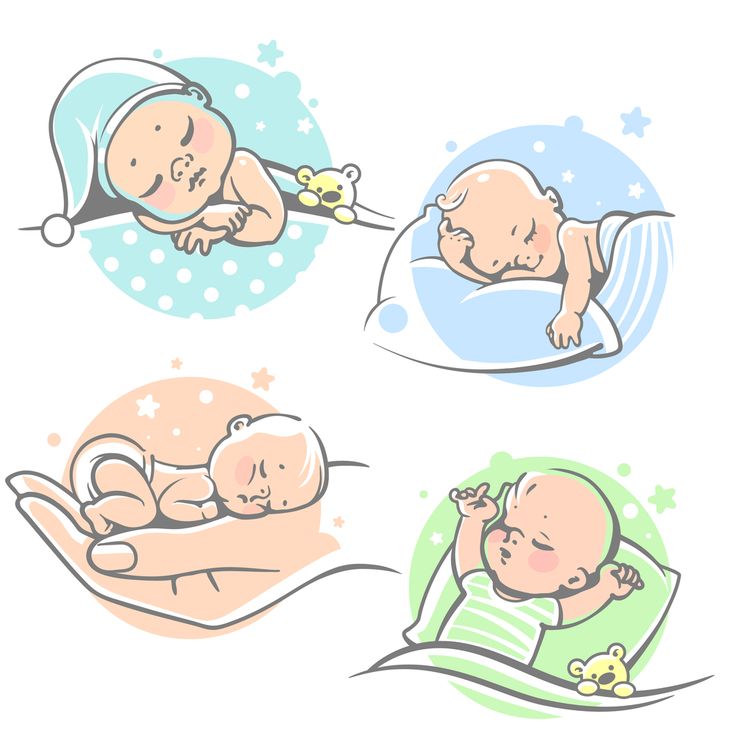
Non-REM sleep consists of the following stages:
- Entering sleep
- Superficial sleep
- Deep sleep
Deep sleep
Deep sleep in babies is much better than in adults. Children practically do not react to sounds, light, touch and temperature. This stage of sleep in young children lasts about 20 minutes. Deep sleep is responsible for restoring energy. It "reboots" the body, relieves accumulated fatigue, gives physical rest, restores and "charges" the immune system.
In order to fully recover physically and strengthen the immune system, children need a sufficient presence of the stage of deep sleep - contrary to a fairly common misconception that children up to almost a year old should sleep exclusively on superficial sleep.
Falling asleep after 4 months
Now, falling asleep, babies “walk the steps of sleep”, successively passing through all stages of sleep.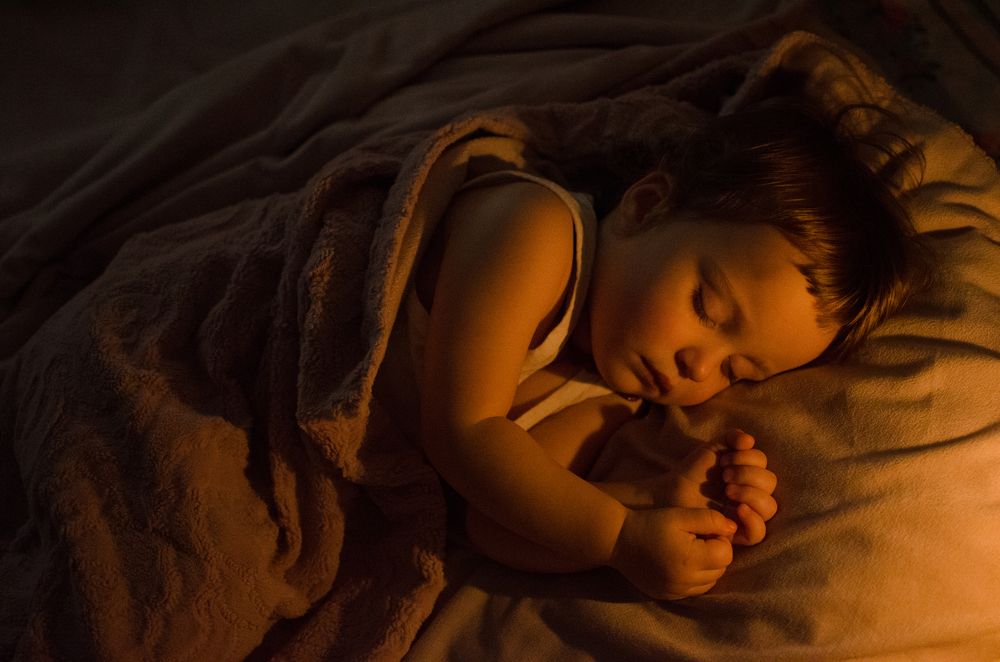
Sleep stages of a child after 3–4 months:
- sleep entry;
- superficial sleep;
- deep dream;
- fast sleep.
That is why if you try to shift a grown-up child who has just fallen asleep, he will most likely wake up immediately - his dream was superficial.
40-minute naps
Sleep phases make up a child's sleep cycle. After 3-4 months, it is similar to the adult sleep cycle, but has a much shorter duration - about 40 minutes.
A baby's 40-minute sleep cycle often ends with the baby waking up. This is necessary to monitor and assess its condition. Is everything in order, is it not hot, not cold, is the baby hungry?
If everything is in order, the baby immediately falls asleep again, and often parents do not even notice this micro-awakening. If something is wrong, the baby declares his needs.
Such awakenings between sleep cycles occur every night in adults.

